Staff Sergeant Clarence Simon Utne

- Unit: 90th Bomb Group, 320th Bomber Squadron (Heavy)
- Service Number: 39092185
- Date of Birth: October 29, 1916
- Entered the Military: March 10, 1942
- Date of Death: January 8, 1943
- Hometown: Waubay, South Dakota
- Place of Death: Papua, New Guinea
- Award(s): Distinguished Flying Cross, Purple Heart
Mentored by Mrs. Brett Brennan
Waverly South Shore School
2022/2023
Early Life
Clarence Simon Utne was born in Waubay, South Dakota, on October 29, 1916. He was raised on a farm by his parents, Sivert and Josephine (Klugness) with his five brothers (Henry, Albert, Selmer, Perry, and Harvey) and six sisters (Alma, Tilda, Jennie, Thelma I, Thelma G, and Bernie). His father was an immigrant from Norway.
Utne was confirmed at Zion Lutheran Church, in Ortley, South Dakota, on July 26, 1931. His mother died in 1935.
Utne graduated from Waubay High School. Preferring to go straight into the workforce, Utne moved to Roseburg, Oregon to work with his two brothers. His brothers owned Utne Brothers Garage where they would repair and then sell vehicles.

Homefront
Even before the United States entered World War ll, Waubay’s agricultural industries stepped up production. The processing plant in the community increased its average daily kill to 1,200 to 1,500 head per day. The United States military utilized the animal by-products, meat scraps, and animal grease for machinery.
Farming was a profitable and common practice for many in his community. With the start of the war, expectations for higher farm production rose. However with so many men enlisting there was a labor shortage. As a result, farmers struggled to meet the expectation.

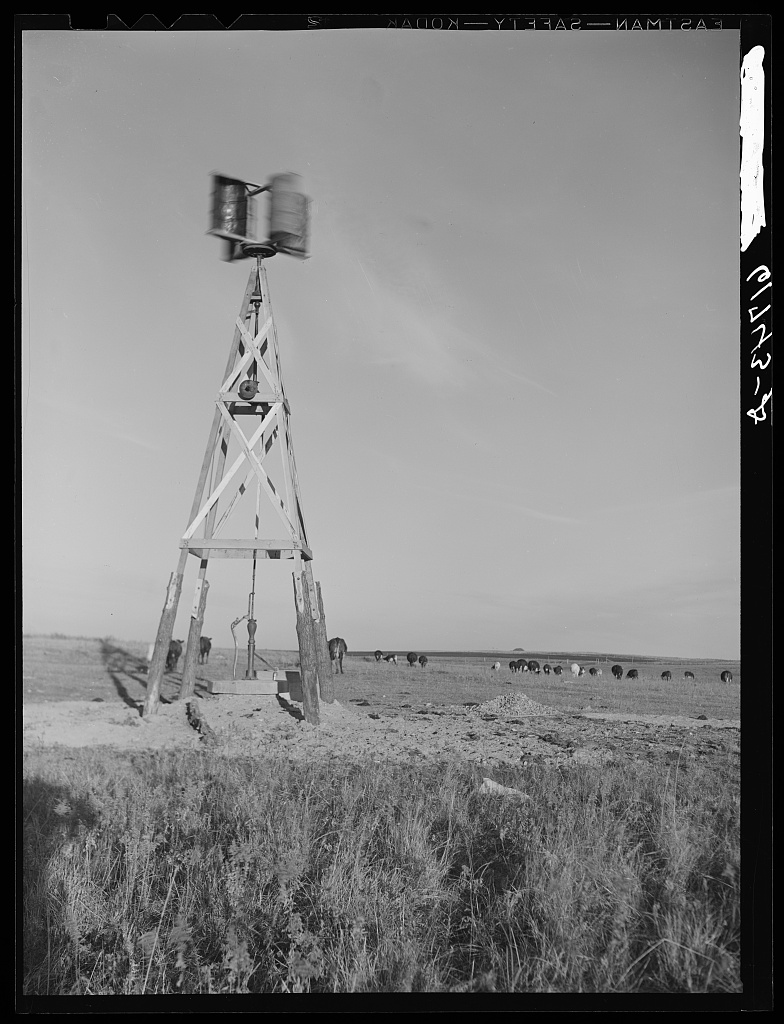
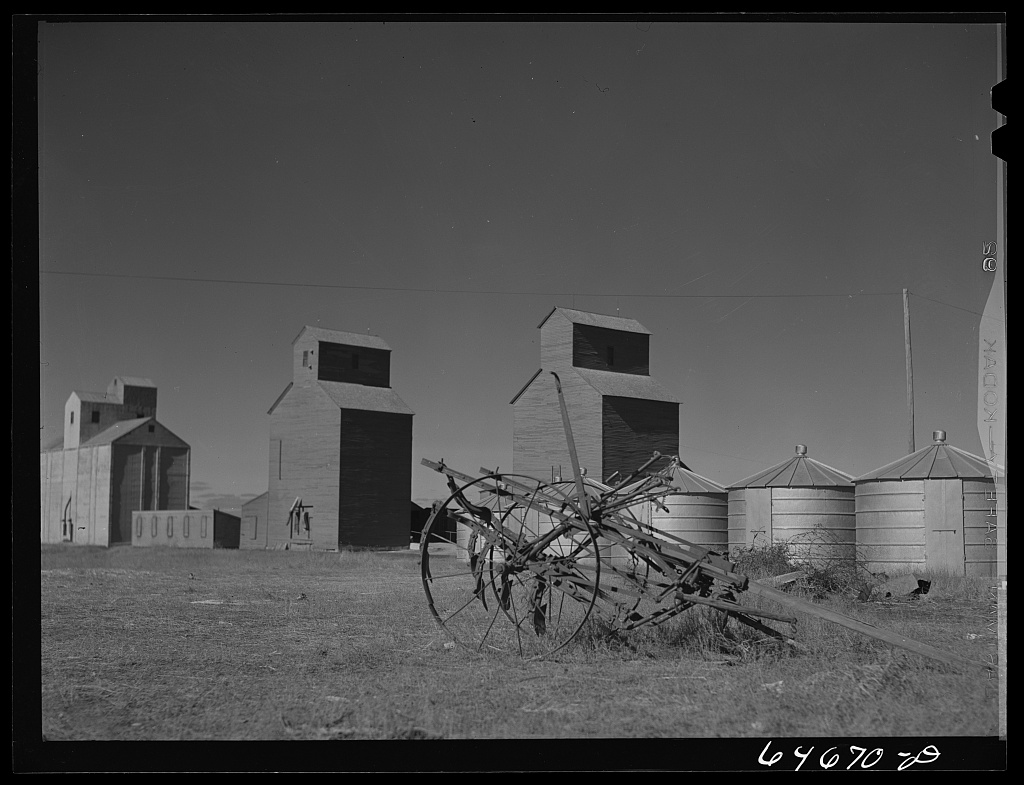
Military Experience
After he was drafted on March 10, 1942, Utne trained first at Sheppard Field, Texas and later the Hawaiian Islands. All five of Utne’s brothers also served in the war. Staff Sergeant Clarence Utne joined the 90th Bomb Group, 320th Bomber Squadron (Heavy).
On September 14, 1942, Staff Sergeant Utne left for his next assignment at New Guinea. On January 8, 1943, Utne volunteered for a difficult and dangerous combat mission against the Japanese Navy. The main goal of the attack was to stop the Japanese reinforcements from landing. According to Clarence’s great nephew, Bill Utne, Sergeant Utne volunteered for the mission because one of his friends in the division became sick, and he wanted to replace his friend.
During the attack, Utne and the flight crew shot down four Japanese fighter planes. To quote Staff Sergeant Utne’s commanding officer, R.L. Taylor, “After engaging the enemy continuously for almost an hour, he destroyed another enemy fighter.” Then, when Utne was leaving the scene, a shot entered the airplane’s fuselage, struck Staff Sergeant Utne, killing him instantly. His remains were first buried at Sydney, Australia. Utne’s family first found out about his death when Clarence’s letters to his brother, Joe, were returned marked as “killed in action.”
Staff Sergeant Utne was awarded the Purple Heart. Later, on January 11, 1943, general headquarters in the Southwest Pacific announced he also had been posthumously awarded the Distinguished Flying Cross. On July 29, 1945, Utne’s remains were reinterred at the National Memorial Cemetery, Honolulu, Hawaiʻi.
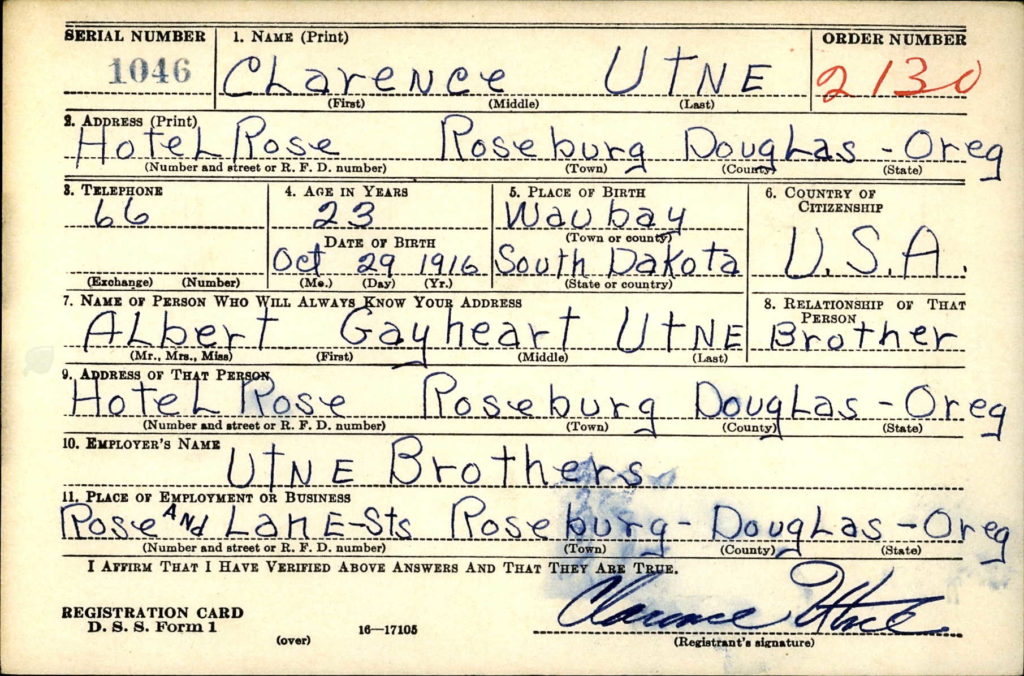
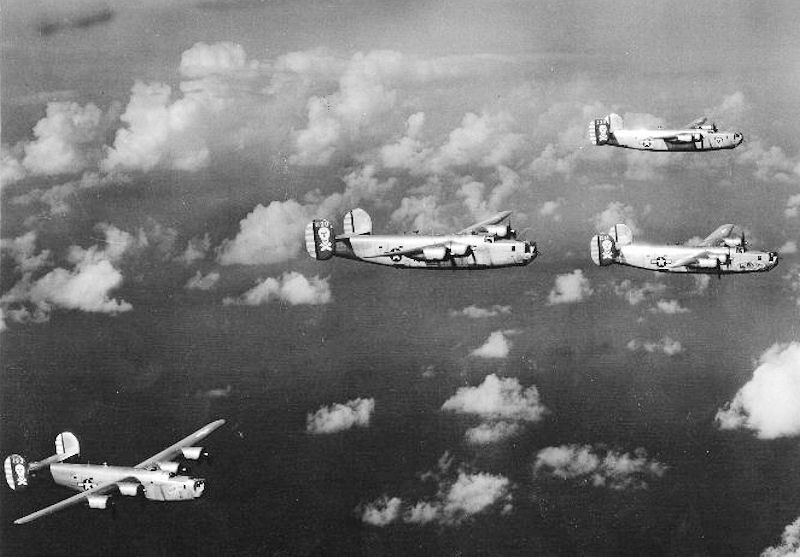
Eulogy
On October 29, 1916, Staff Sergeant Clarence Simon Utne was born in Waubay, South Dakota. He grew up on a small country homestead with his parents, five brothers, and six sisters.
On January 8, 1943, Staff Sergeant Clarence Utne volunteered for a difficult and dangerous combat mission against the Japanese Navy. After a lengthy aerial battle, he died from a gunshot wound. His brother, Corporal Joe Utne, first found out his brother had died when a letter he sent to his brother was returned and marked “killed in action.”
Staff Sergeant Utne was awarded the Purple Heart and the Distinguished Flying Cross. The Distinguished Flying Cross cited his extraordinary achievement of shooting down six enemy fighter planes while participating in an aerial flight over the southwest end of Lae Airfield in Papua New Guinea.
Because of people like Staff Sergeant Clarence Utne, Americans have freedoms we otherwise would not have. Staff Sergeant Utne’s act of service, heroism, and bravery set an example of how other Americans can respond to their call of action. Staff Sergeant Clarence Utne did not just change the war, but he changed the perspective of many young soldiers.
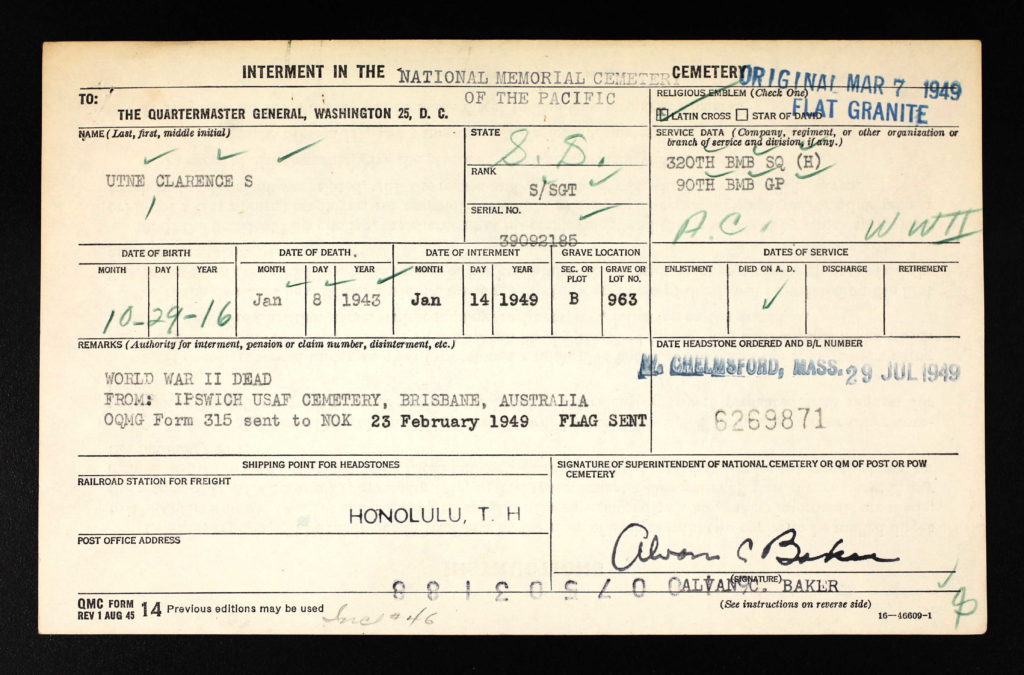
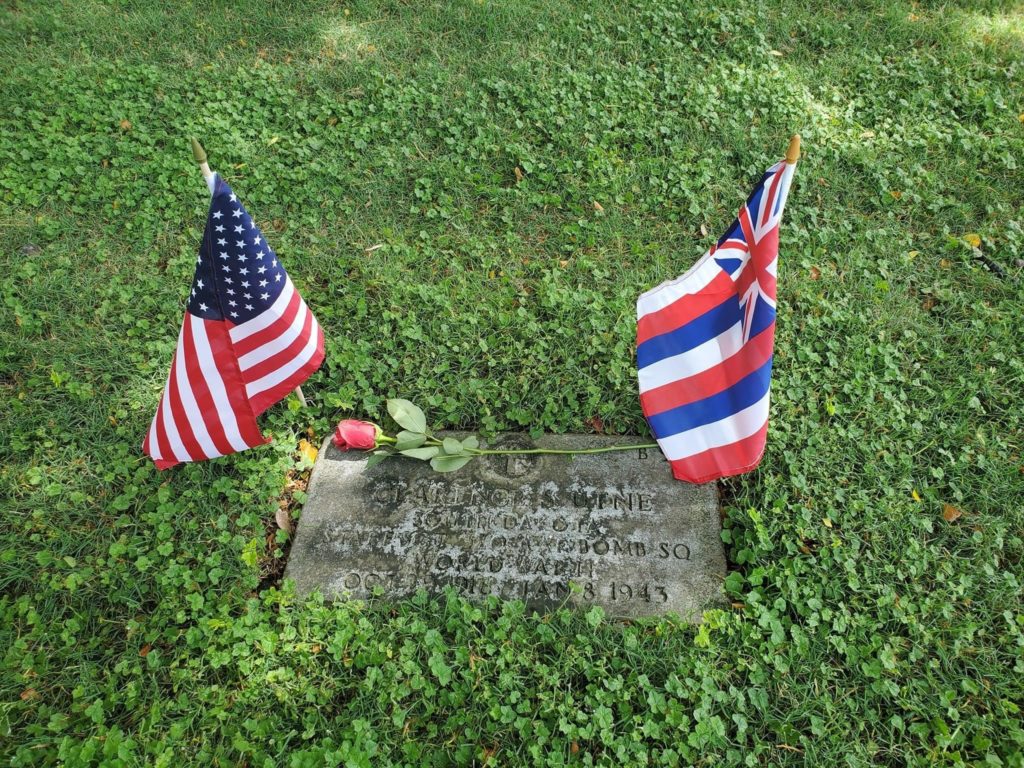
Reflection
Participating in the Sacrifice for Freedom®: World War II in the Pacific Student and Teacher Institute and researching Staff Sergeant Clarence Utne changed my life. When I found out my teacher, Mrs. Brett Brennan and I, were selected as one of the 16 groups to go to Hawaiʻi for the program, I had no clue how to react. I would be joined in Hawaiʻi with 15 other teams from around the country, have the opportunity to meet them, and hear their Silent Hero’s stories.
Over these past months of research there was never a moment I regretted signing up for this program. When I found out I would be studying a Silent Hero, I didn’t think it would impact my life as much as it did. The past six months I have researched Staff Sergeant Clarence Utne and told his story. With each assignment I did, I learned new and interesting facts and details about my Silent Hero and World War II. When we were looking at all the options to select our silent hero, we found out Clarence Utne grew up very close to us. This afforded us the opportunity to connect with his family, have face to face interviews with family, and hear in-depth stories about Clarence.
While in Hawaiʻi, I got to walk in the footsteps of these soldiers and live the history. I met so many amazing people. I will never forget all the stories and memories we shared together. Most people don’t get the experience that I did. I will never take that for granted. I stayed on the USS Missouri where many sailors slept, and to raise the flag on that same ship. I got to see “The Black Tears” of the USS Arizona. I talked with tour guides that witnessed the events of December 7, 1941, and saw buildings damaged by shrapnel. During my time in Hawaiʻi , I learned that every person has a story that is important, and every story should be heard.
Bibliography
Primary Sources
“Army Reports New Casualties.” Rapid City Journal [Rapid City, South Dakota], March 3, 1943. Newspapers.com (350626130).
Clarence Utne. Individual Deceased Personnel File. Department of the Army.
Clarence Utne. World War II Draft Cards Young Men, 1940-1947. Digital images. http://ancestry.com.
Clarence S. Utne. Final Pay Voucher. National Archives and Records Administration – St. Louis.
Clarence S. Utne. National Cemetery Interment Control Forms, 1928-1962. Digital images. http://ancestry.com.
Clarence Simon Utne. Evangelical Luther Church in America Church Records, 1781-1969. Digital images. http://ancestry.com.
“Jolly Rogers” of the 90th Bombardment Group on a Mission. Photograph. 1943. United States Air Force Historical Research Agency. https://commons.wikimedia.org/wiki/File:90th_Bomb_Group_B-24s_-_1943.jpg.
“Posthumous Award Given Waubay Man.” Rapid City Journal [Rapid City, South Dakota], September 13, 1943. Newspapers.com (350487125).
“S.D. Air Hero Gets Posthumous Award.” Argus-Leader [Sioux Falls, South Dakota], July 16, 1944. Newspapers.com (187313146).
South Dakota. Roberts County. 1920 U.S. Census. Digital images. http://ancestry.com.
South Dakota. Roberts County. 1925 South Dakota State Census. Digital images. http://ancestry.com.
South Dakota. Roberts County. 1930 U.S. Census. Digital images. http://ancestry.com.
South Dakota. Roberts County. 1935 South Dakota State Census. Digital images. http://ancestry.com.
“South Dakota Soldiers Lose LIfe in Battle.” The Minneapolis Star [Minneapolis, South Dakota], September 11, 1943. Newspapers.com (229823736).
“S.P. Utne Passes In Eugene Hospital.” The News-Review [Roseburg, Oregon], August 13, 1958. Newspapers.com (94025643).
Spencer, Murlin. “Dakotans Write Historic Chapter In Southwest Pacific Warfare.” Rapid City Journal [Rapid City, South Dakota], July 25, 1944. Newspapers.com (350507856).
Utne Family Photographs. 1943-1945. Courtesy of Bill Utne.
Utne Family Records, 1916-1943. Courtesy of Stacy Utne-Hagen.
Vachon, John. Cattle grazing. Roberts County, South Dakota. Windmill made of old barrel halves and Model T motor. Photograph. November 1940. Library of Congress (2017811215). https://loc.gov/item/2017811215.
Vachon, John. Cressbard, South Dakota. Elevators.Photograph. February 1942. Library of Congress (2017814189). https://www.loc.gov/item/2017814189/.
Vachon, John. Grain elevators along railroad tracks, Sisseton, South Dakota. Photograph. September 1939. Library of Congress (2017719105). https://www.loc.gov/item/2017719105/.
Secondary Sources
The First 100 Years in Codington County, South Dakota, 1879-1979. Watertown: Codington County, 1979.
“The Great Plains During World War II.” Plains Humanity Alliance, University of Nebraska—Lincoln. Last modified 2008. Accessed July 6, 2023. http://plainshumanities.unl.edu/homefront/agriculture.hml.
Hanson, Lisa D., and Tim Hoheisel. Watertown and Codington County, South Dakota. Mount Pleasant: Arcadia Publishers, 2002.
Hull, Michael D. “What Made the B-25 Mitchell Bomber so Legendary.” Warfare History Network. Last modified December 2019. Accessed July 19, 2022. https://warfarehistorynetwork.com/article/what-made-the-b-25-mitchell-bomber-so-legendary.
Lickei, Christy. In-person interview. March 28, 2023.
“Pacific Wrecks.” Pacific Wrecks. Last modified 2023. Accessed July 19, 2023. https://pacificwrecks.com/airfields/png/lae/missions-lae.html.
Stokke, Vel, and Stella Tesch. Heritage Sampler: A Sampling of Stories and Essays about People and Places in the History of Codington County. Watertown: Watertown Public Opinion: 1975.
Utne, Bill. In-person interview. April 29, 2023.
Utne, Greg. In-person interview. April 29, 2023.
Utne-Hagen, Stacy. Telephone interview. February, 2023.
“Why Did Japan Attack Pearl Harbor?” Imperial War Museum. Last modified 2023. Accessed July 6, 2023. https://www.iwm.org.uk/history/why-did-japan-attack-pearl-harbor.


